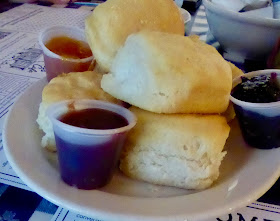Little did we know about the Natchez Trace when we decided to drive it. You hear the name, Natchez Trace, and it sounds historic and interesting, but what exactly is it?
About the Natchez Trace
Before Europeans discovered the New World, native American tribes like the Chippewa, Choctaw and Natchez traveled along footpaths connecting their territories in the Mississippi Valley. Prior to that, people of the Mississippian Period (1200-1730 C.E., Current Era) used the trails broken through the wilderness by animals like buffalo, wolves and bear.
As choice land along the East Coast was claimed, settlers moved west and to the south as they explored what is now Tennessee, Kentucky, Alabama and Mississippi.
Trade from these areas and others traveled down the Ohio, Tennessee and Mississippi Rivers south to ports in Natchez and New Orleans. It could be a very profitable venture. Trade is a two-way process, but before the coming of steam, the currents were too strong to return home by river. Boats were sold for their lumber, boatmen either bought horses and goods from their profits to sell in the north or walked the 450 miles from Natchez to Nashville along the series of paths that became known as the Natchez Trace.
It was a treacherous route. If robbers or Indians didn't plunder and kill travelers, disease, accidents fording deep tributaries and slogging through swamps might.
The Rev. John Johnson wrote from the Trace in 1812, "I have this day swam my horse 5 times, bridged one creek, forded several others, besides the swamp we had to wade through. At night we had a shower of rain - took up my usual lodging on the ground in company with several Indians."
No surprise that it was known as "the Devil's backbone."
Boaters weren't the only users of the Trace. More settlers and speculators did business and visited friends along the Trace. Military units of Spain and later the new United States and post riders did, too.
As traffic along the Trace increased, some of the paths were beaten down, creating long passages where the bank was so high travelers could only see what lay immediately ahead. This gave attackers a decided advantage as they could literally jump down upon their prey.
It took about 35 days to traverse the Trace by foot, 25 days on horseback, assuming all went well. In 1810, 10,000 travelers walked the Trace. Once steamboats began to ply the rivers in the mid 1820s, the Trace became obsolete. By the Civil War, it was all but forgotten though some skirmishes and battles were fought in the vicinity.
Prodded by local historians and women's groups, in 1938 the Natchez Trace Parkway became a unit of the National Park System to commemorate the historic route. The Natchez Trace Scenic Trail joined the parkway under the National Park System and the National Trail system, too. Both parallel the original as closely as possible.
We start the Trace
The Good Girls' plan was to leave Nashville and catch the beginning of the Trace to see the Double Arch Bridge, veer over to Memphis then go to Tupelo, return to the Trace Parkway and follow it to its end just north of Natchez.
After finding ourselves in a "Seinfeld" rerun - the car we reserved at Thrifty was no longer available at the Nashville airport - the Good Girls hit the road. Watching the morning traffic inching into Nashville, even slower than it moves in Atlanta, we were glad to be going in the opposite direction.
The Double Arch bridge is a lovely thing, impressive in its simplicity, but, suckers for home cooking that we are, was soon supplanted by the discovery of Loveless Cafe. I had read that any trip on the Trace should begin or end at Loveless, but assumed that was merely tourist board hyperbole.
Fortunately our stomachs were growling and we decided to detour a mile or so and try it for an early lunch.
The complex of shops and motel surrounding the deceptively small cafe spoke to its popularity and the friendly bustle of waitresses around full tables boded well. Biscuits are king here so we each ordered one with barbecue.
Then a plate of four with three different flavors of jam and preserves arrived. Delicious.
Heading to the restroom I passed a glass window behind which was a young woman elbow deep in biscuit dough. They make 10,000 a day! Large, fluffy and heavenly, mounded high with barbecue pork in a sweet sauce, it was immensely satisfying. Not so much that we didn't split a home made cobbler, though.
Satisfied, we left the Trace and headed to Memphis to visit with the memory of Elvis.


























